The fierce eruption of an intra-Arab split threatens to undermine key American goals in the Middle East, write Tamara Wittes and Ilan Goldenberg, at a particularly delicate moment. They argue that President Trump’s swift embrace of the Saudi side in the rift with Qatar exacerbates the danger and undermines his own declared goals. This piece originally appeared on Foreign Policy.
It was only three weeks ago that President Donald Trump, in Riyadh, proclaimed that he had secured unprecedented unity amongst Sunni governments to fight the two scourges all the assembled 55 governments agreed were destabilizing the Middle East—Islamist extremism and Iran. That unity lasted mere days, however, as Saudi Arabia, Egypt, the UAE, and Bahrain cut off relations with Qatar and essentially imposed a blockade on the country, which imports 40 percent of its food across its land border with Saudi Arabia.
The fierce eruption of this intra-Arab split threatens to undermine key American goals in the Middle East, at a particularly delicate moment. Trump’s swift embrace of the Saudi side in this family argument exacerbates the danger and undermines his own declared goals. The administration’s current approach has launched the United States into the middle of a slew of regional rivalries and may well exacerbate the geopolitical conflict between Iran and Saudi Arabia—one with significant religious and sectarian undercurrents.
Trump and his senior foreign-policy advisers seem to agree on a fundamental approach in the Middle East: After years in which, in their view, President Barack Obama ceded ground in the region to Iran and Russia, they seek a revision of the regional power balance back in favor of the United States and its Sunni allies. But it appears likely that the president’s visit to Riyadh and his unconditional support for the Saudi view of the roots of regional instability has instead exacerbated that instability, and made the achievement of U.S. goals in the region even harder.
Even as Trump’s interagency was still determining how they would respond to the (renewed) breakdown amongst Gulf Cooperation Council states, the president tweeted his support for the Saudi-led squeeze on Qatar, and took credit for the action. Regardless of whether his boasting was well-founded, there is no question the tweets undercut Secretary of State Rex Tillerson and Secretary of Defense James Mattis, who were both working the phones trying to bring the parties together. In subsequent days, the “adults” managed to get Trump on the phone with the four Arab leaders most involved in the dispute, and issued readouts emphasizing to each of them that unity was important to “preserve regional stability.” But on June 9, just an hour after Tillerson sought to move the parties forward by calling on Saudi Arabia to ease its blockade of Qatar, Trump publicly blasted Qatar as a funder of terrorism in a Rose Garden press conference.
Far from jumping into the midst of intra-GCC squabbles, the United States has traditionally played a moderating role.
Far from jumping into the midst of intra-GCC squabbles, the United States has traditionally played a moderating role. It is true that Qatar’s independent-minded foreign policy has often irked American officials, just as it has Doha’s regional neighbors. Key tensions have revolved around Qatar’s support for the Muslim Brotherhood, arming extremist groups in Syria, and a more agnostic approach towards the threat posed by Iran. Qatar has been slower than some of the other Gulf states to tackle terrorist financing, and its hosting of both Hamas leaders and Taliban figures has been a particular irritant (except when U.S. officials need to send messages to those groups). On the terror-funding issue, Qatar has now joined the rest of the Gulf in tightly regulating its banking sector and local charities, and has even prosecuted some egregious funders. The biggest remaining terror-funding problem all across the Gulf is that of private money flowing through informal hawalas and the cash economy. But the United States also relies on the Qatari-built and maintained al-Udeid Air Base for operations over Iraq, Syria, and Afghanistan, and has approximately 11,000 troops deployed to Qatar, which serves as a forward base for U.S. Central Command.
Three deficits
The split within the Gulf Cooperation Council is deeply damaging to U.S. interests, in three ways. First, the divides within the Arab world actually give Russia and Iran more room to meddle in Arab politics and to insert themselves into regional affairs—as is evident from Moscow’s assertive diplomacy with Doha and Tehran’s offer to airlift food into Qatar to compensate for the Saudi blockade. The intra-Arab split just further reduces American influence. Indeed, in recent days we’ve seen numerous regional actors taking sides. Turkey has weighed in on Qatar’s behalf. Iraq has found itself awkwardly stuck in the middle. Iran has taken advantage of the division and aligned itself with Qatar in an attempt to draw it closer. And Moscow is clearly pleased to see this division among American partners. There are even reports that Russian hackers helped fuel the crisis by penetrating Qatari state media and placing false stories about a provocative speech given by the Qatari emir. They would not do this unless they knew it was helpful to their interests and harmful to those of the United States.
Qatar’s continued open door to Tehran provokes suspicion among its Arab neighbors, but it is also inescapable, since the two countries share the world’s largest natural gas field, with the world’s lowest extraction rates. The way to constrain Iranian interference while managing the necessities of geographic coexistence is through close GCC dialogue, facilitated by Trump’s clarion call on the Iranian threat and supported by U.S. military and intelligence cooperation.
Intra-Arab unity is even more crucial to pursuing America’s top national-security priority in the Middle East, as declared by Trump in his Riyadh speech—the defeat of the Islamic State and like-minded violent extremist groups. While Saudi Arabia and the Emirates insist that there’s no difference between the Islamic State and the Muslim Brotherhood (backed by Qatar and its omnipresent Al Jazeera satellite network), that wide a scope for a new war on terror is not supported by the empirical record nor by American interests.
It is hard to square an “America First” approach to counterterrorism with a passive acquiescence by President Trump to slay whatever dragons are identified by regional allies, especially when they do not all agree that these are dragons at all.
Complicating matters for Israel
Finally, the intra-GCC argument threatens another declared priority for Trump’s Middle East policy—advancing Israeli-Arab rapprochement in the context of a renewed regional peace process. In past iterations of Arab-Israeli diplomacy, smaller Gulf states were more able to advance relations with Israel while Saudi Arabia, because of its cherished identity as the leader of the Muslim world, will tend to lag in engagement with the Jewish state.
And even while Israeli officials continue to strongly oppose Qatar’s relationship with Hamas, they also acknowledge that the Qataris have played a constructive role in flowing aid to Gaza. If the Gulf blockade on Qatar causes that support to dry up, it could exacerbate an already dire humanitarian situation. Hamas would be under increasing political pressure and may respond, as in the past, by escalating tensions and sparking a renewed military conflict with Israel. This would serve as an attention-grabber, but at a great cost for all involved. In that scenario, it would be impossible for Trump to make any progress in securing what he calls the “ultimate deal” between Israelis and Palestinians.
In this overall regional context, the Trump administration’s response to the Islamic State attacks in Tehran that killed 12 people was not merely maladroit, but self-defeating. This was a seminal moment for Iran—the first major terrorist attacks on home soil in years. We’ve seen Islamic State terror attacks focus the minds of other regional leaders and strengthen their resolve to work with the United States in countering the threat—as Kuwait did in launching its own terror-financing crackdown after a mosque bombing in 2015. While direct U.S.-Iranian cooperation against the Islamic State is unrealistic and perhaps even undesirable, there’s no question that Iran’s influence over Iraqi Shiite parties will prove crucial to securing a lasting victory against the Islamic State in Iraq. It’s no surprise that Iran’s Islamic Revolutionary Guards Corps responded quickly by accusing Saudi Arabia of being behind the attacks—further escalating regional tensions. In responding to the attacks, the United States had an opportunity to mitigate Iran-Saudi tensions and to push Iran toward a more constructive role vis-à-vis the Islamic State. Instead, the Trump administration again chose to dive deeper into the regional morass and add fuel to the fire by issuing a statement that condemned the attack, but suggested that Iran had it coming because of its own support for terrorism.
You don’t have to share, but don’t fight
President Obama’s famous statement that Iran and Saudi Arabia learn how to “share” the region tilted too far towards indifference in a regional struggle for influence in which America has and should have a clear preference. The United States should be closer to our traditional friends than our adversaries; those friends are so in part because they help advance regional stability against Iranian subversion. Trump’s uncritical embrace of Saudi Arabia’s regional approach, however, is not advancing American interests—it is escalating regional tensions and instability, and providing more room for America’s adversaries to gain influence.
A better approach would be to offer Saudi Arabia a clear quid pro-quo: the United States will recognize Riyadh’s leadership in the region and will do more to counter Iranian influence, if the kingdom will do more get its own house in order by setting aside intra-Arab disputes, mitigating the fierce polarization (mostly over Islamism) within and between Arab societies, and focusing Arab efforts directly on Iran and the Islamic State—the threats both agree are top priorities. The United States can take real and meaningful steps to push back on Iran’s destabilizing activities, and not just by exposing their bad behavior. We have already seen three strikes on Iranian-supported Shiite militias in Eastern Syria in recent weeks, which have likely sent some signals to Tehran. In Yemen, the United States can step up its efforts to deter greater Iranian interference and provide some support for the Saudi-Emirati coalition, while also pushing for a swift political solution and restraining actions that violate our own rules and norms regarding use of force. (Congress may weigh in on this point this week by voting against replenishing Saudi’s precision-guided missiles.) In Iraq, the United States is using helping to oust the Islamic State from Mosul, and should simultaneously press the Gulf States to provide more political and financial support to help pull the Iraqi central government away from Tehran.
President Trump prides himself on being a dealmaker who never gives something for nothing—which made his fulsome embrace of Saudi Arabia’s regional approach uncharacteristic, as well as unseemly. The quid pro quo we propose here for the Gulf should be a natural for him.
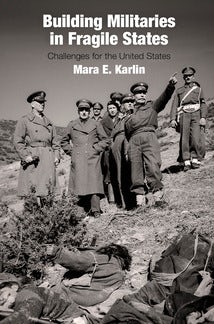
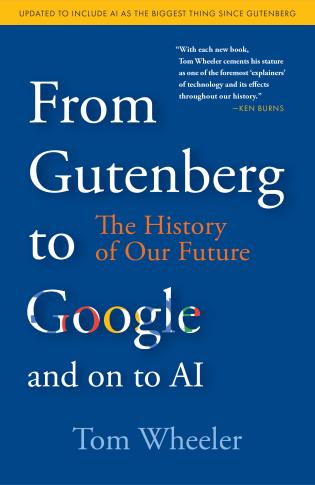
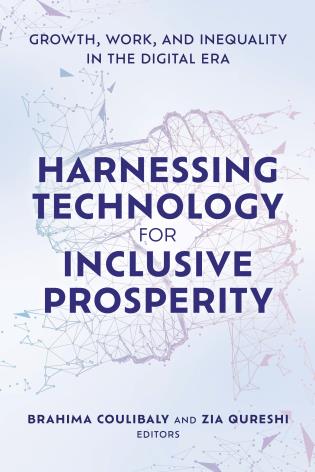
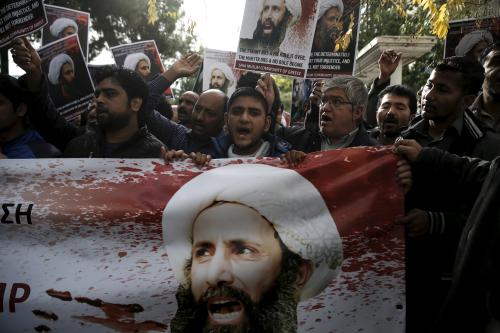
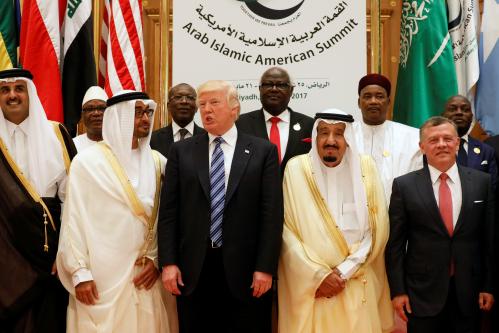
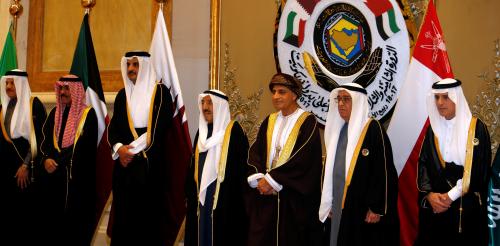


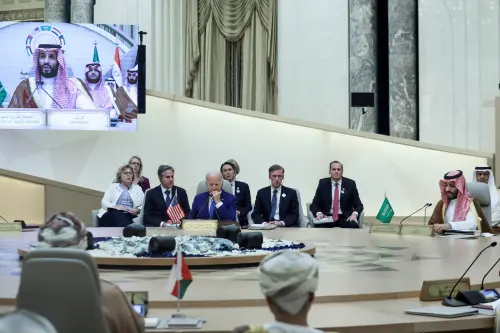
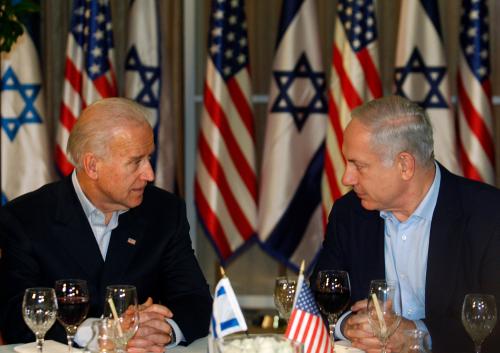
Commentary
How Trump’s black and white world view met reality in the Middle East
June 15, 2017